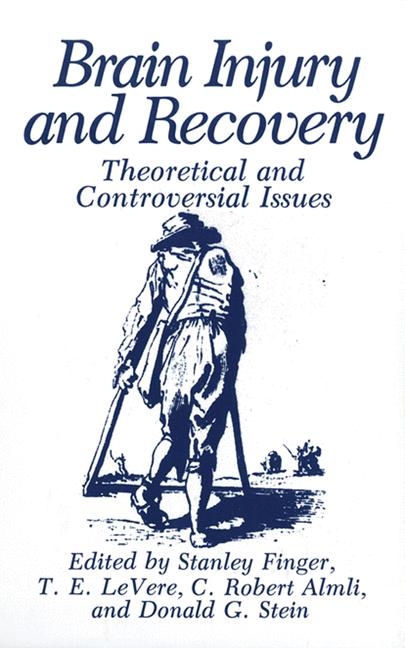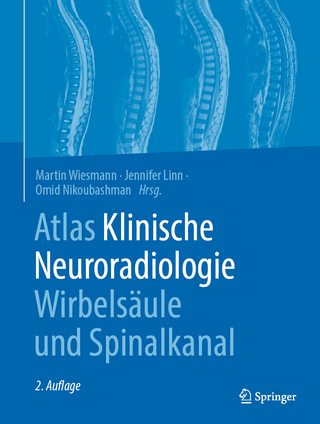
Brain Injury and Recovery
Kluwer Academic/Plenum Publishers (Verlag)
978-0-306-42756-5 (ISBN)
- Titel ist leider vergriffen;
keine Neuauflage - Artikel merken
1 Toward a Definition of Recovery of Function.- 1. The Problem Defined.- 2. Definitions of Recovery of Function.- 3. Recovery or Behavioral Sparing?.- 4. Recovery or Compensation?.- 5. Recovery as Absolute and Inferential.- 6. Mechanisms of Recovery.- 7. Summary and Conclusions.- References.- 2 Neural System Imbalances and the Consequence of Large Brain Injuries.- 1. Introduction.- 2. Subtotal Lesions.- 2.1. Normalization and Recovery of Function.- 2.2. Some Limitations.- 3. Complete Lesions.- 3.1. Recovery without Normalization.- 3.2. The Nature of the Behavioral Deficit.- 3.3. Some Supporting Data.- 3.4. The Chronic Consequence of Large Injuries.- 4. Conclusions.- References.- 3 Bases of Inductions of Recoveries and Protections from Amnesias.- 1. Introduction.- 2. Training Effects.- 3. Drug Effects.- 4. Memory and Remembering.- 5. Controversial Issues.- References.- 4 Neural Spare Capacity and the Concept of Diaschisis: Functional and Evolutionary Models.- 1. Introduction.- 1.1. Intimations of Spare Capacity.- 1.2. Do Large Ablations More Readily Reveal Spare Capacity?.- 1.3. Evolutionary and Functional Puzzle of Spare Capacity.- 2. The Elements of Brain Information Processing Are Diffuse Domains.- 2.1. Unrealistic Aspects of Machine Metaphors and the Bugaboo Mosaic.- 2.2. Diffuse Domains Are Adequate for Maintaining Distinctions: A Metaphor of the Brain as an Immense Set of Counters.- 2.3. Von Monakow’s Concept of Diaschisis.- 2.4. Experimental Studies of Diaschisis.- 2.5. Diaschisis in the Model.- 2.6. Implications of the Model for Understanding Early Brain Damage.- 3. Error and Reliability when Large Numbers of Subsystems Interact.- 3.1. Introduction to Neuroeconomics: Costs and Benefits in the Natural Selection of Spare Neural Capacity.- 3.2. Two Types of Safety Factor: Reiteration (Redundancy) and Aiming High.- 3.3. Numerical Demonstration of the Importance of the Reiterative Safety Factor.- 3.4. Implications of the Numerical Demonstration for Ablation Research.- 3.5. Reiterations Are Unlikely to Comprise Large, Complex Units.- 3.6. Relevance of Research on Brain Size for the Safety Factor Hypothesis.- 3.7. Implications when There Is Additional Loss of Tissue.- 4. Five Possible Nonneural Preadaptations for Safety Factor.- 4.1. Developmental Heterochrony.- 4.2. The Head as a Releaser of Imprinting at Birth.- 4.3. The Visual Proportions of Infants as Affectional Releasers.- 4.4. A Large Head on a Large Body Is Fearsome rather than Cute.- 4.5. Surface/Volume Ratio in Thermoregulation.- 5. An Important Implication of Nonneural Natural Selection Factors for Neural Information Processing, Diaschisis, and Recovery.- 6. Summary.- References.- 5 Kurt Goldstein and Recovery of Function.- 1. Introduction.- 2. Methodological Assumptions and Empirical Origins.- 3. Theoretical Approach.- 4. Localization.- 5. Psychological Deficits following Brain Damage.- 6. Psychological Testing of Brain-Damaged Patients.- 7. Recovery and Rehabilitation.- 8. Significance for Neuropsychology.- References.- 6 Assumptions about the Brain and Its Recovery from Damage.- 1. Mechanisms of Brain Function.- 2. MacLean and the Triune Brain.- 3. Multiple Functions of Neural Systems.- 4. The Effects of Damage.- 4.1. Are Any Changes “Absolute”?.- 4.2. Motivational Changes following Brain Damage.- 5. Secondary Effects of Brain Damage.- 6. Residual Visual Abilities.- 7. The Extent of Stroke-Induced Damage.- References.- 7 Mass Action and Equipotentiality Reconsidered.- 1. Introduction and Historical Roots.- 2. Do We Need Mass Action and Equipotentiality?.- 2.1. Principles of Cortical Function.- 2.2. Principles of Behavior.- 3. Evidence of Recovery and Nonrecovery.- 3.1. Distinguishing between Getting Better and Recovery.- 3.2. Examining the Evidence for “Recovery of Function”.- 3.3. Recovery, Mass Action, and Equipotentiality.- 4. Conclusions.- References.- 8 Margaret Kennard and Her “Principle” in Historical Perspective.- 1. Introduction.- 2. Education and Background.- 3. Lesion Development and Motor Function.- 4. Historical Antecedents.- 5. Deficits following Early Lesions.- 6. Theoretical Formulations.- 7. Serial Lesions.- 8. Other Pursuits and Later Contributions.- 9. Conclusions.- References.- 9 Infant Brain Injury: The Benefit of Relocation and the Cost of Crowding.- 1. Introduction.- 2. The Relocation of Speech.- 2.1. The Phenomenon.- 2.2. Two Necessary Conditions for Speech Relocation.- 2.3. The Cost of Relocation: Crowding of Functions.- 2.4. Conclusions.- 3. Relocation of Functions and Crowding in Animals.- 3.1. Hemispheric Specialization and Asymmetry.- 3.2. Bilateral Brain Injury and Relocation.- 3.3. Infant Lesions and Compound Cue Discriminations.- 4. Some Final Comments.- References.- 10 Arguments against Redundant Brain Structures.- 1. Introduction.- 2. Too Much Brain.- 3. Neuronal Redundancy during Infancy.- 4. Restatement of Problem.- 5. The Motor System.- 6. The Visual System.- 7. The Auditory System.- 8. The Somatosensory System.- 9. Autonomic Functions.- 10. Comment.- References.- 11 Another Look at Vicariation.- 1. Vicariation: Relationship to Localization of Function.- 2. What Is Recovery?.- 3. Vicariation and Other Theories of Recovery.- 4. Attempts to Locate Recovered Function.- 5. Changing Concepts of Brain Function and Another Look at Vicariation.- 6. Conclusions.- References.- 12 Hughlings Jackson’s Theory of Localization and Compensation.- 1. Introduction.- 2. Some Aspect of Jackson’s Role in the Development of Modern Neurology.- 3. Jackson’s Theory of Localization and Its Derivative: Compensation.- 4. Critique: Historical and Contemporary.- 4.1. Time Frames.- 4.2. The Motor Model.- References.- 13 The Parcellation Theory and Alterations in Brain Circuitry after Injury.- 1. Introduction.- 2. Invasion.- 3. Overlap of Connections Is a Feature of Primitive and Developing Brains.- 4. Ontogenetic Parcellation.- 5. Cytodiversification.- 6. Experimentally Induced Sprouting and Accidental Brain Injury.- 7. Conclusion.- References.- 14 Trophic Hypothesis of Neuronal Cell Death and Survival.- 1. Introduction.- 2. Key Terms and Concepts.- 3. The Neuronotrophic Factor Hypothesis.- 4. Nerve Growth Factor: Its Presence and Competence in the CNS.- 5. Nerve Growth Factor’s Functional Roles in the CNS.- 6. Summary and Conclusions.- References.- 15 Sensory Cortical Reorganization following Peripheral Nerve Injury.- 1. Somatotopic Order in the Primary Somatosensory Cortex.- 2. Control of Somatotopic Order.- 3. Acetylcholine as a Permissive Agent for Neuronal Plasticity.- 4. Neuronal Responses following Deafferentation.- 5. The Effects of Acetylcholine on Neurons in Normal Somatosensory Cortex.- 6. Cellular Mechanisms.- 7. The Hypothesis.- 8. Summary.- References.- 16 Is Dendritic Proliferation of Surviving Neurons a Compensatory Response to Loss of Neighbors in the Aging Brain?.- 1. Introduction.- 2. The Aging Brain.- 3. Regressive Influences.- 4. Balance of Influences.- References.- 17 Practical and Theoretical lssues in the Use of Fetal Brain Tissue Transplants to Promote Recovery from Brain Injury.- 1. Introduction.- 2. Specificity of Neural Connections between Host and Transplant Tissue.- 2.1. Some New Experimental Tests of Transplant Specificity.- 2.2. Are Transplants Morphologically “Normal”?.- 2.3. Is Homologous Embryonic Tissue Required to Obtain Recovery?.- 3. Is There a Critical Postoperative Period for Transplant Effectiveness?.- 4. Do Trophic Factors Play a Role in Transplant-Induced Recovery?.- 4.1. Recovery Seems to Persist when Transplants Are Removed.- 4.2. Do Transplants Release or Stimulate the Production of Trophic Substances?.- 4.3. Glial Cells May Play an Important Role in Transplant-Mediated Functional Recovery.- 5. Systemic Injections of Trophic Factors Can also Promote Functional Recovery.- 6. Problems and Risks in Using Embryonic Brain Tissue Grafts for the Treatment of Brain Injury.- 7. Conclusions.- References.- 18 Functional Electrical Stimulation and Its Application for the Rehabilitation of Neurologically Injured Individuals.- 1. Early History of Electrical Stimulation in Medicine.- 2. Recent History of Functional Electrical Stimulation for Patient Therapy in Spinal Cord Injury.- 3. Functional Electrical Stimulation.- 4. An Isokinetic Muscle Exerciser for Strength Training.- 5. An Aerobic Exercise Bicycle for Endurance Training.- 6. Physiological Changes and Physical Conditioning Responses to FES-Induced Active Physical Therapy.- 6.1. Background Information.- 6.2. Functional Electrical Stimulation as a Therapeutic Modality.- 6.3. Cardiovascular Responses.- 6.4. Thermoregulatory Responses.- 6.5. Muscular Response.- 7. Functional Electrical Stimulation and Walking.- 8. Summary.- References.- 19 Recovery of Language Disorders: Homologous Contralateral or Connected Ipsilateral Compensation?.- 1. Introduction.- 2. Right Hemisphere Compensation.- 3. Ipsilateral Structural Compensation.- 4. Factors in Recovery from Aphasia.- 4.1. Initial Severity.- 4.2. Time from Onset.- 4.3. Etiology.- 4.4. Lesion Size.- 5. Variations in Language Laterality and Anatomic Asymmetry.- 6. Conclusions.- References.- 20 Sensory Substitution and Recovery from “Brain Damage”.- 1. Introduction.- 2. Sensory Substitution.- 2.1. Vision Substitution.- 2.2. Tactile Auditory Substitution.- 2.3. Cutaneous Sensory Substitution in Leprosy Patients.- 2.4. Braille and Sign Language.- 2.5. Electromyographic Sensory Feedback.- 3. Physiological Considerations.- 3.1. Peripheral Factors.- 3.2. Central Nervous System Factors.- 4. Perceptual Considerations.- 5. Practical Considerations.- 6. Conclusions.- References.- 21 Emotion and Motivation in Recovery and Adaptation after Brain Damage.- 1. Introduction.- 2. Arousal, Emotion, and Motivation after Brain Damage.- 3. Some Clinical Examples of the Importance of Emotion and Motivation in Recovery after Brain Damage.- 4. The Problem of Motivation in Neurological Rehabilitation and the Limits of the Damaged Neurological System.- 5. The Relative Importance of Frontal Lobe Injury versus Temporal Lobe Injury for Recovery of Emotional and Motivational Deficits.- 6. A Note about Awareness and Its Importance in Psychiatric and Neurologically Oriented Therapies.- 7. Summary and Conclusions.- References.- 22 Recovery of Function: Sources of Controversy.- 1. Introduction.- 2. Assessing the Functional Organization of the Brain.- 3. Variability and the Concept of “Normative” Performance.- 4. Multiple Brain Changes and Causality.- 5. Recovery and the Null Hypothesis.- 6. Conclusions.- References.
| Erscheint lt. Verlag | 31.7.1988 |
|---|---|
| Zusatzinfo | 362 p. |
| Verlagsort | New York |
| Sprache | englisch |
| Gewicht | 770 g |
| Themenwelt | Medizinische Fachgebiete ► Chirurgie ► Neurochirurgie |
| Medizin / Pharmazie ► Medizinische Fachgebiete ► Neurologie | |
| Naturwissenschaften ► Biologie ► Humanbiologie | |
| ISBN-10 | 0-306-42756-7 / 0306427567 |
| ISBN-13 | 978-0-306-42756-5 / 9780306427565 |
| Zustand | Neuware |
| Informationen gemäß Produktsicherheitsverordnung (GPSR) | |
| Haben Sie eine Frage zum Produkt? |
aus dem Bereich


